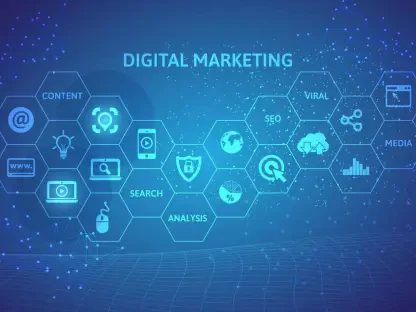AI-driven image editing is redefining the way businesses create visual content, offering remarkable efficiency in handling design tasks. With rising demands for faster turnarounds and higher quality visuals, companies are now compelled to explore cutting-edge solutions to meet market expectations. Contributing to this transformation is ImageKit, which has launched a significant update to its AI-driven image editing suite, greatly streamlining production processes. The update minimizes the need for manual intervention, allowing creatives to focus on ideation rather than execution.
Exploring Core Features: Technology Analysis
The suite’s cutting-edge components stand out because of their significant impact on creative production. Among the standout features, AI generative fill emerges as an innovative solution allowing for intelligent image extension. By seamlessly adding contextually relevant content, this feature enhances visual versatility, effectively negating the need for costly reshoots. The AI background change function furthers this efficiency by providing photorealistic background swaps, ensuring image adaptability across varied formats with a single base image. Additionally, the AI background removal tool ensures clean isolations with realistic shadow generation, eliminating the painstaking process of manual retouching.
Prompt-based image editing introduces a remarkable level of interactivity through natural language commands. This capability ensures changes like adding elements or adjusting times of day in scenes are executed with pronounced realism, improving user interaction while achieving desired alterations effortlessly. Another noteworthy aspect is AI image upscaling, which addresses the need to enhance the resolution of older images, crucial for meeting high-resolution display standards while preserving existing assets, culminating in cost reductions associated with reshoots.
Harnessing Recent Developments and Trends
Recent developments reflect the growing adoption of AI-driven image editing among various industries desiring robust automation solutions. ImageKit incorporates advanced features that align with evolving creative demands, enabling businesses to respond rapidly to shifting market trends. The seamless integration with storage systems like Amazon S3 and Google Cloud Storage allows for hassle-free adoption, reflecting the increased inclination toward technological ease. Additionally, evolving consumer preferences and industry conditions are steering this technology’s trajectory, emphasizing speed and precision in visual content delivery.
Real-World Impact: Industry Applications
AI-driven image editing has found substantial applicability across numerous sectors, illustrating its transformative potential. Industries facing demands for high-quality digital assets deploy these tools to streamline processes and maintain brand integrity. Notable implementations include sectors like advertising and media, where rapid design adjustments are pivotal. The technology’s adoption showcases a clear inclination toward automation, proving instrumental in enhancing efficiency across creative teams, thereby catalyzing a digital shift in visual content production.
Addressing Challenges and Limitations
Despite the extensive advantages, AI-driven image editing continues to face challenges that warrant attention. Technical hurdles such as perfecting algorithms for more nuanced aspects demand ongoing research, while regulatory considerations surrounding data usage pose potential constraints. Additionally, market obstacles linked to technology adoption rates underscore the need for strategic development efforts. Continuous investments in technological advancements are essential to overcome these limitations, ensuring widespread accessibility and optimization.
Projecting Future Prospects
Prospective advancements in AI-driven image editing suggest potential breakthroughs in creative automation, demonstrating a promising outlook. Emerging technologies hint at further capabilities in intelligent design implementations and collaborative platforms, allowing teams to interact seamlessly with digital content. Such developments envisage a transformative impact on how industries approach visual production, ensuring constant innovation remains the norm.
Concluding Thoughts
In past updates, AI-driven image editing had profoundly reshaped creative production paradigms. The possibilities for enhanced automation and precision reflected in its features illustrate a promising direction for businesses seeking faster and more efficient visual content solutions. The technology’s ability to integrate effortlessly into existing infrastructure positions it as a linchpin for future developments in creative and digital spheres. As it continues to evolve, its potential impact on visual content creation highlights the necessity for industries to adapt swiftly to these transformative capabilities. Future considerations point toward sustaining innovation and ensuring seamless integration to remain competitive in a demanding market landscape.









